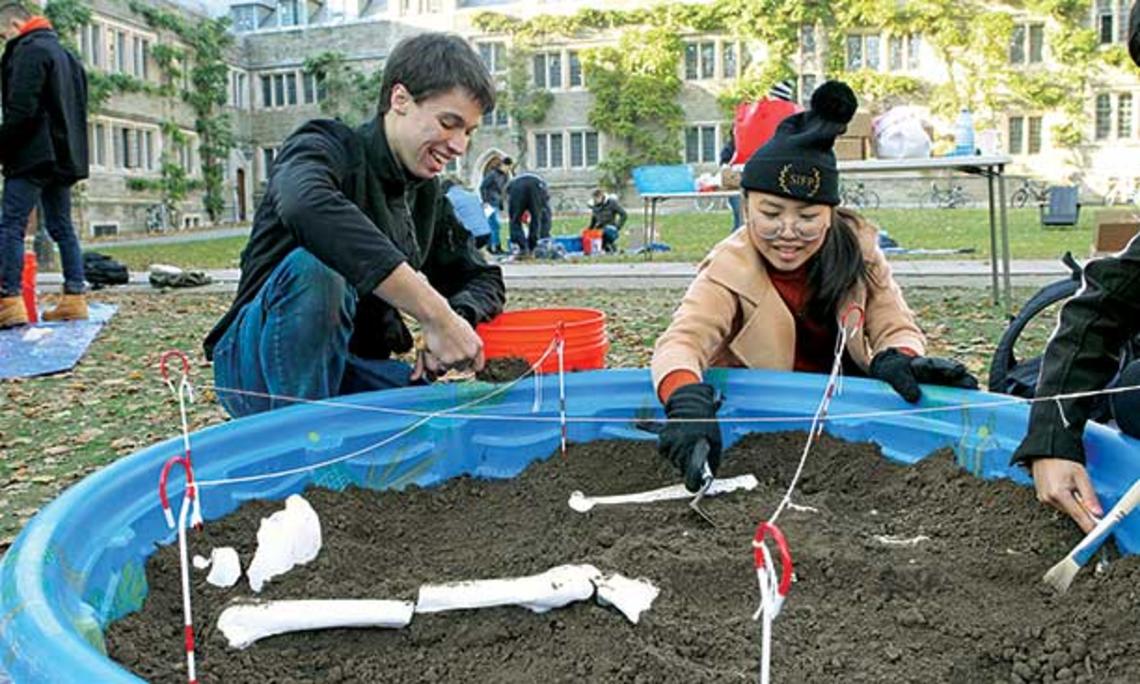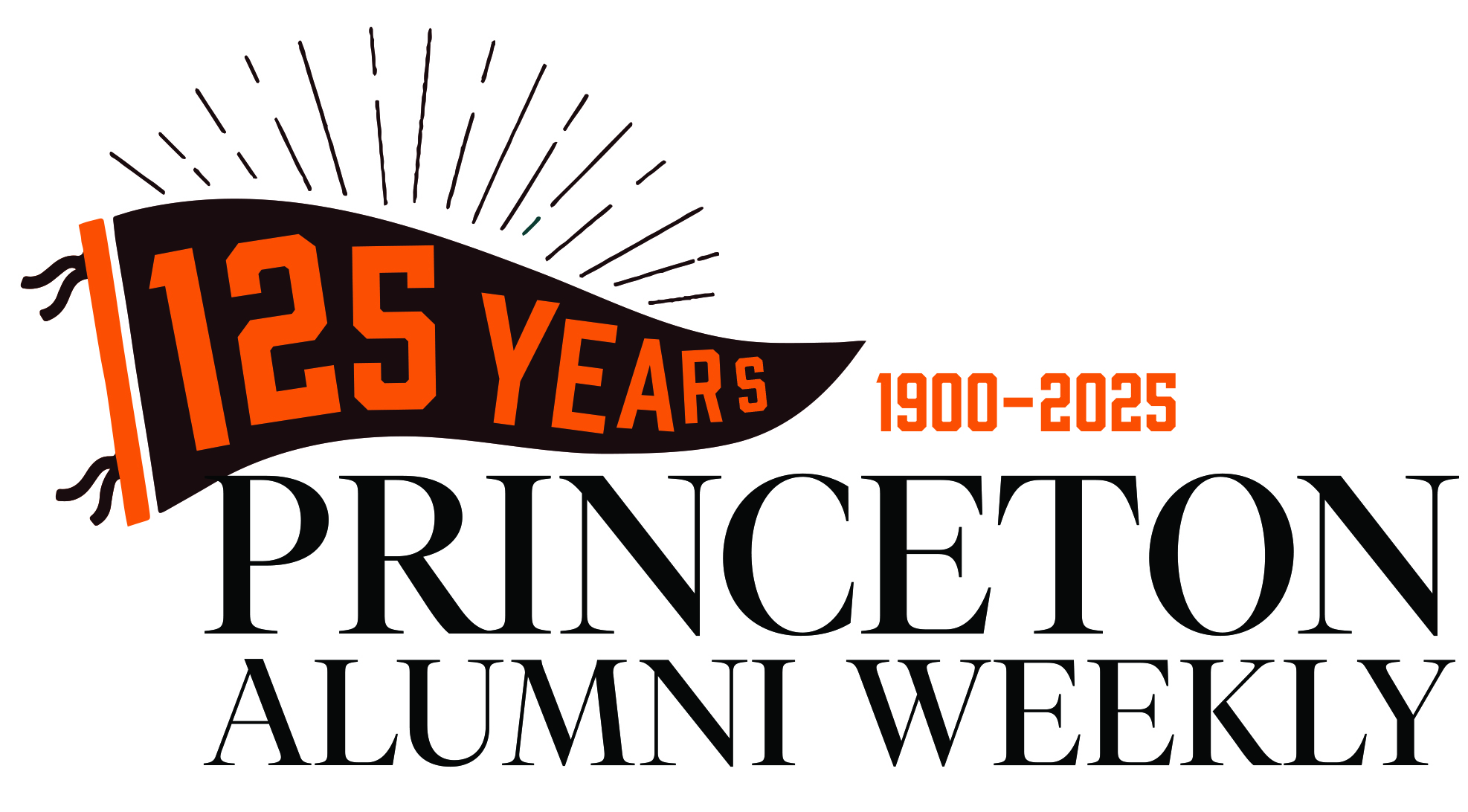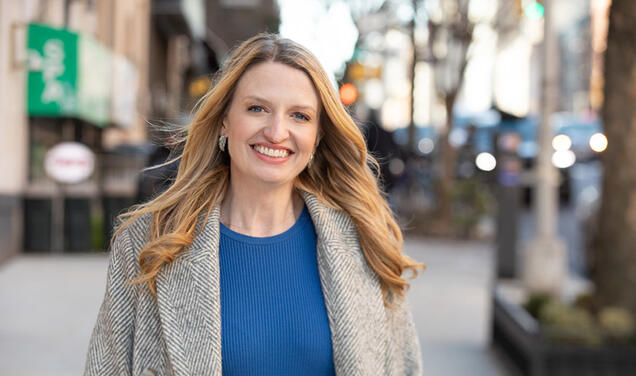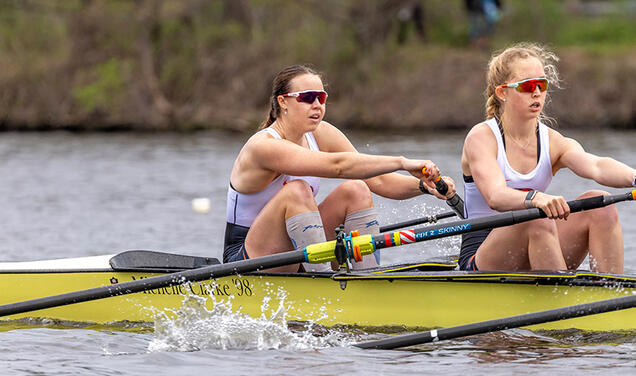
Princeton freshmen don’t usually play in the dirt.
But Chythanya Murali did just that on a brisk Saturday in November with her classmates in “Archaeology as History: Studying the Past by Digging in the Dirt,” one of the fall term’s freshman seminars.
Murali and her lab partners, Gabrielle Sudilovsky and Will Kusnierek, spent a few hours unearthing a pair of 3-D printed skeletons from a kiddie pool in the Blair-Joline courtyard. They noted signs of trauma in the skeletons, including broken bones, and wondered what could have killed the people.
“There’s a story behind every bone,” Murali said. Her specialty in the group was osteology, the study of the bones themselves. Sudilovsky and Kusnierek would tackle the other parts of the puzzle, including questions about the objects that were found next to the skeletons.
Although this was not a real excavation, it closely resembled the work that the course’s instructor does for her own research. Janet Kay, a Cotsen postdoctoral fellow in the Society of Fellows who lectures in the Humanities Council and the history department, studies the fourth through sixth centuries in Europe as an archaeologist and historian.
In fact, the “skeletons” that the students dug up were replicas of two skeletons from a pair of cemeteries in Oxford, England, that Kay is using for her own research.
Although this was not a real excavation, it closely resembled the work that course instructor Janet Kay does for her own research.
Kay received funding to travel last summer to Oxford and examine skeletons from the two cemeteries, which date to the fourth century, around the fall of the Roman Empire. The cemeteries were used just a generation apart, but there were huge cultural differences between them.
Bodies in the older cemetery are aligned in rows and were buried with Roman objects, while the newer cemetery has burials at random intervals, with Anglo-Saxon objects. Kay’s job is to learn what the changes mean.
“Are they the original community, and they’ve changed their practices entirely within 20 years?” she asked. “Or are they new people? In which case, what happened to the old people?”
Kay noted that even though the Oxford cemeteries do not look like their modern analogues, the general idea has remained similar. People in this period still had designated locations where they would bury their dead.
The course and archaeology go beyond digging for bones — archaeology holds lessons for how students should interpret history, Kay said, whether in their academic studies or their lives.
“History is not just text,” she said. “The process by which we get that information is also part of the historical record.”
During the excavation, students had to be careful to distinguish between objects, like seeds, that Kay placed in the kiddie pools, and whatever debris was already in the dirt from Princeton’s campus.
Across a walking path from Murali’s group, three other students were looking at their own skeleton. Amy Torres picked up a seed she found in the dirt, then recorded its location and placed it in a plastic bag to test later. It was the 11th seed her group had found.
Torres is considering a concentration in history or anthropology, but her partners, Thomas McBride and Kwan Sirisakunngam, are both engineers. They were here because the course sounded interesting. McBride used to pretend to be an archaeologist while playing in his backyard as a child: “When I dug up a root, I’d call it a dinosaur bone,” he said.
The students spent the next few class sessions in a molecular biology lab to review what they had found.
Archaeology is a science, and the students had to methodically go through a series of questions about their findings. What did the seeds found next to a body indicate about someone’s diet? Which side of a bone would be less deformed after so long underground?
Sudilovsky and Murali were debating the relationship between the two skeletons that they found in their pit. Could it just be a coincidence that two bodies were buried on top of each other? Sudilovsky thought it was intentional, and she had what she called a “crazy idea.”
“I think it’s a love story,” Sudilovsky said. The bodies showed signs of trauma, and this could have been a tragic death of star-crossed lovers centuries before anyone spoke of Romeo and Juliet. “Maybe it’s a fairy tale.”











0 Responses